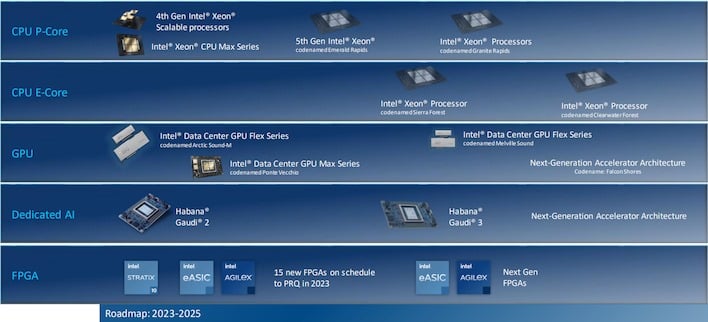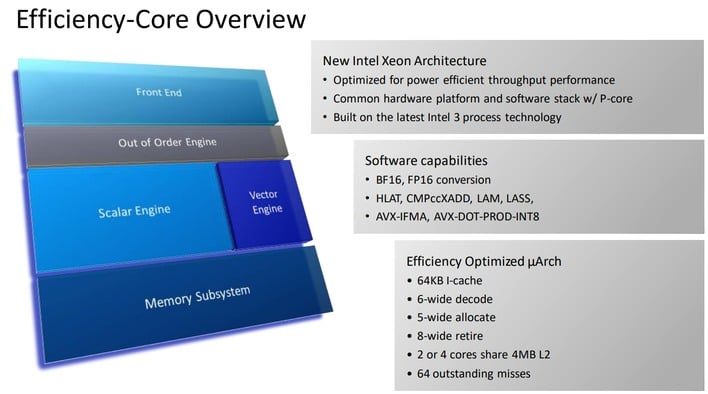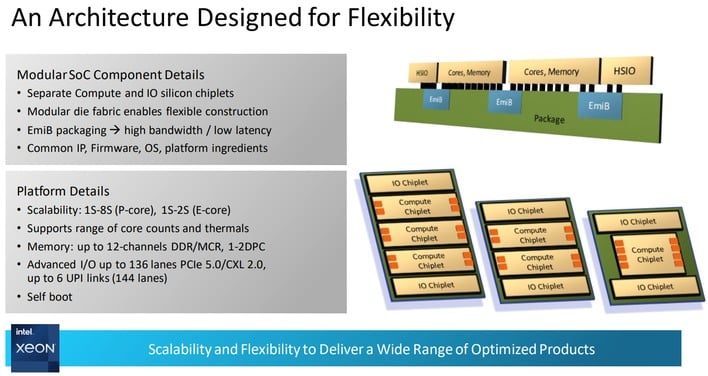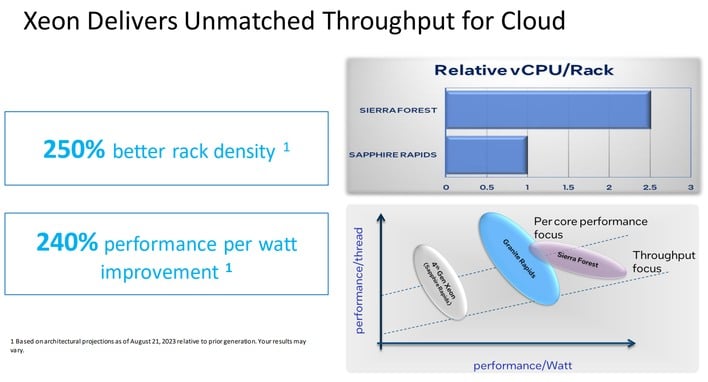Intel Details Sierra Forest Many-Core Xeons For Maximum Core Density In The Cloud

PC gamers and power users sometimes sneer at Intel's E-cores because they aren't as fast on a single thread as the company's powerful P-cores. Demanding client tasks—like many operations in creative applications as well as, of course, games—tend to be single-threaded, or at least held up by a single slow thread. In that case, having super-fast CPU cores that can crunch through one thread at breakneck speed is of critical importance.
In servers, however, some workloads are better served by handling many, many requests simultaneously, where each request is perhaps not particularly intensive for a modern CPU and the overhead from task switching becomes a liability. There are also cases where your task scales perfectly across as many cores as you can manage—often known as "embarrassingly parallel" workloads. In situations like these, having 140% more cores is better than having 30% faster cores.
Sierra Forest Many-Core Xeons Are Coming
That's exactly what Intel is set to deliver with its upcoming Xeon parts code-named Sierra Forest. They're part of a two-pronged approach, along with the more conventional Granite Rapids Xeon family, which will be built using P-cores as usual. Sierra Forest, as you've probably surmised, will instead use E-cores, exclusively. While this will probably have some deleterious effects on the single-threaded performance of those machines compared to Granite Rapids, it will allow Intel to pack up to 144 CPU cores into a single CPU socket.
At Hot Chips '23 (currently ongoing in Palo Alto, California), Intel divulged a few new details about Sierra Forest. A lot of what the brief covers, we already knew: Sierra Forest will be Intel's first product fabbed on the Intel 3 process, and that it will be based on the company's next E-core architecture. It's not completely clear what that architecture will be, though. Despite sharing various details of the CPU cores, such as that they're gaining AVX-IFMA and INT8 dot product instructions, the company declined to elucidate on the code name.
We suspect it's going to be Crestmont or a close relative. That's the same CPU architecture that will launch inside Intel's Meteor Lake processors alongside the Redwood Cove P-cores. Like the Gracemont cores currently found in Alder Lake and Raptor Lake CPUs, they come in clusters of four CPUs that share 4MB of L2 cache, although apparently some Sierra Forest models may disable half the cores to double the effective L2 cache per core.
In what will probably not be surprising to anyone that pays attention to industry trends, Intel confirmed that Sierra Forest (as well as Granite Rapids) will be built using chiplets. Notably, 144 cores will put Sierra Forest at the top of the "most x86 cores in a single socket" ranking, catapulting Intel past AMD's "Bergamo" EPYC CPUs that offer up to 128 cores in a single socket.
Next-Gen Xeons Will Offer Massive Memory Bandwidth
The company also notes that the platform shared by the two CPU families supports up to twelve channels of DDR5 using MCR-DIMMs, or "Multiplexer Combined Rank" modules that double the transfer rate over standard DDR by multiplexing two ranks of memory at once. Intel's already claimed that Granite Rapids can achieve some 1.5 TB/second of memory bandwidth this way.
Speaking of Granite Rapids, while those parts will scale up to the usual eight-sockets-per-system at a maximum, Sierra Forest will top out at two sockets. We're not sure why this is, but either way, Intel says that the platform will support up to 136 lanes of PCIe 5.0 or CXL 2.0, with an additional six UPI links for inter-socket communication.
Intel says that Sierra Forest offers some 250% improved rack density over Sapphire Rapids, and that it also is capable of a 240% performance-per-watt improvement, although neither of these metrics were qualified with any details on workloads or other circumstances. The company's next Xeon release will be the 5th-gen Xeon Scalable parts code-named Emerald Rapids, but after that, it's Sierra Forest. These E-core parts are scheduled to show up in the early half of next year, while Granite Rapids will follow "shortly thereafter."






